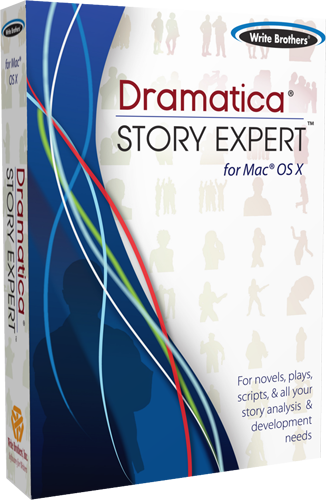As you begin using Dramatica, you will need to learn some key concepts and terms. You must understand what the questions are asking you in order to give accurate answers. It is not expected that a writer using the software for the first time will know much about Dramatica. However, the software provides interactive details that will teach you the concepts as you go along.
There are many useful concepts in Dramatica that you can apply in your writing without using the software. Change/Steadfast, Main/Impact Character, the Archetypes, the Four Throughlines are all examples of some of Dramatica's unique and powerful concepts that you could apply on your own. The software allows you to answer structural questions about your story and provides active feedback, guiding you to other structural choices that are compatible with the story you wish to create. This active feedback would be time-consuming to figure out without the software.
Dramatica doesn't know anything about the subject matter of your story. There are no right or wrong topics or themes. It doesn’t determine the commercial nature of your story. Dramatica only deals with issues at a structural level. For example, Dramatica may assist you in structuring your story so that you main character has a problem of "disbelief", but Dramatica doesn’t know how "disbelief" will be expressed in your story. That's up to you and outside Dramatica's structural view of your story.
Many of Dramatica's questions deal with determining the various themes and issues you wish your story to illustrate. There is special emphasis on locating the central problem(s) that reside in the Main Character and the Overall Story. Dramatica is particularly interested in how the Main Character goes about solving problems.
A writer typically starts the program and answers the questions in the Query System. The questions are textual, or multiple choice. Some multiple-choice questions have only two choices, some have four, some 16, some 64.
When an author makes choices in their story, other choices are automatically selected that are consistent with the author's choices. So the writer doesn't need to answer all of Dramatica's nearly 100 potential questions. By answering 8-12 questions, you have arrived at a "storyform", which is the skeleton that forms the underlying structure of the story. Dramatica fills in the storyform with the remaining structural points that are compatible with the author's answers.
For each structural point, the author also explains in a full text answer why certain choices were made, and how a particular structural concept will be illustrated in the story.
Dramatica doesn't write for you. It's not a plot or idea generator, although it can be quite helpful in brainstorming your ideas. Dramatica can't replace creativity, originality, or talent.
That 1) the vast majority of fictional stories attempt to make an argument about the right or wrong ways to solve a problem; 2) the story embodies the author's perspective on that problem; and 3) the characters, plots, themes and genre form a model of a single mind trying to work its way through the problem.
Dramatica not only defines patterns in stories, but relationships between those patterns. By understanding those patterns, users of the Dramatica theory and software can find logic holes in their plot, characters, and themes.
Dramatica is two things: a theory of story structure, and the most widely-acclaimed software program that assists writers of all kinds in the development of their stories.




